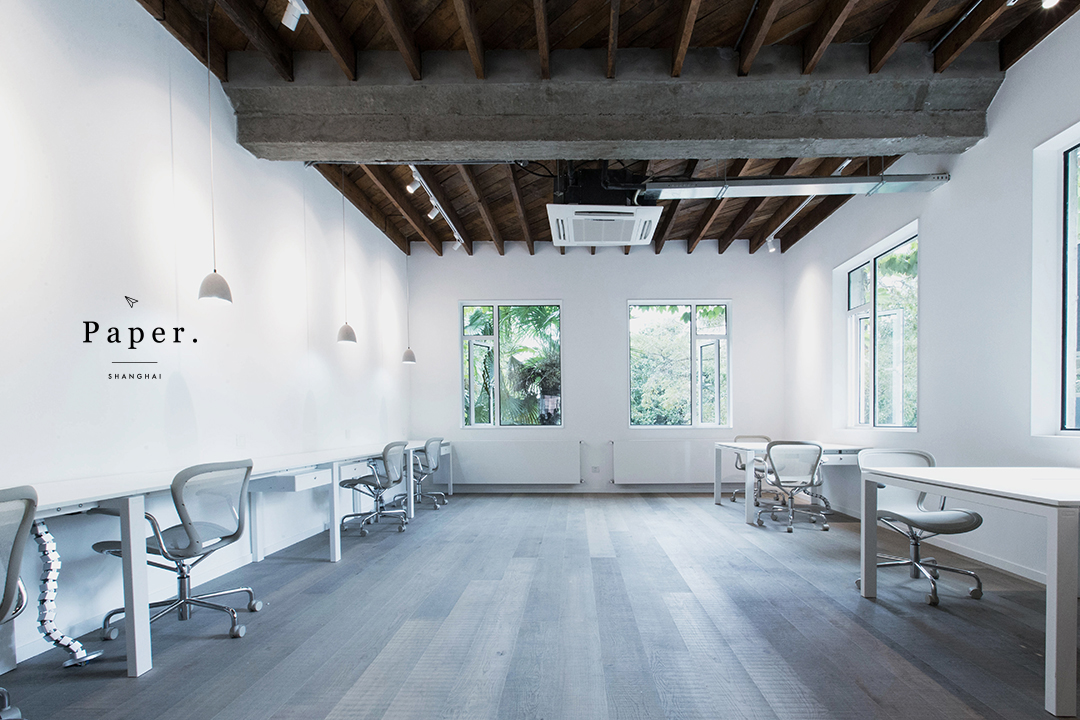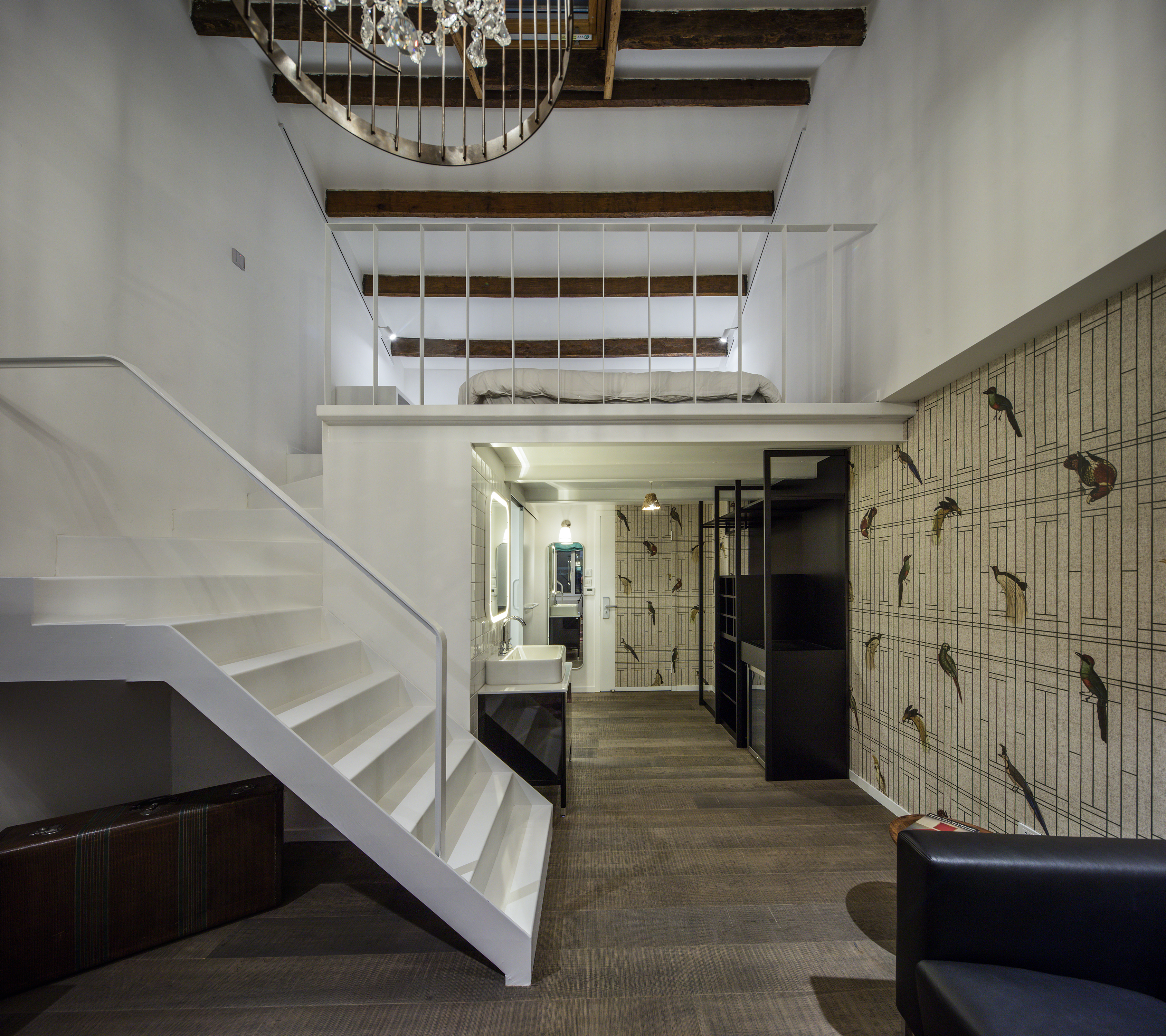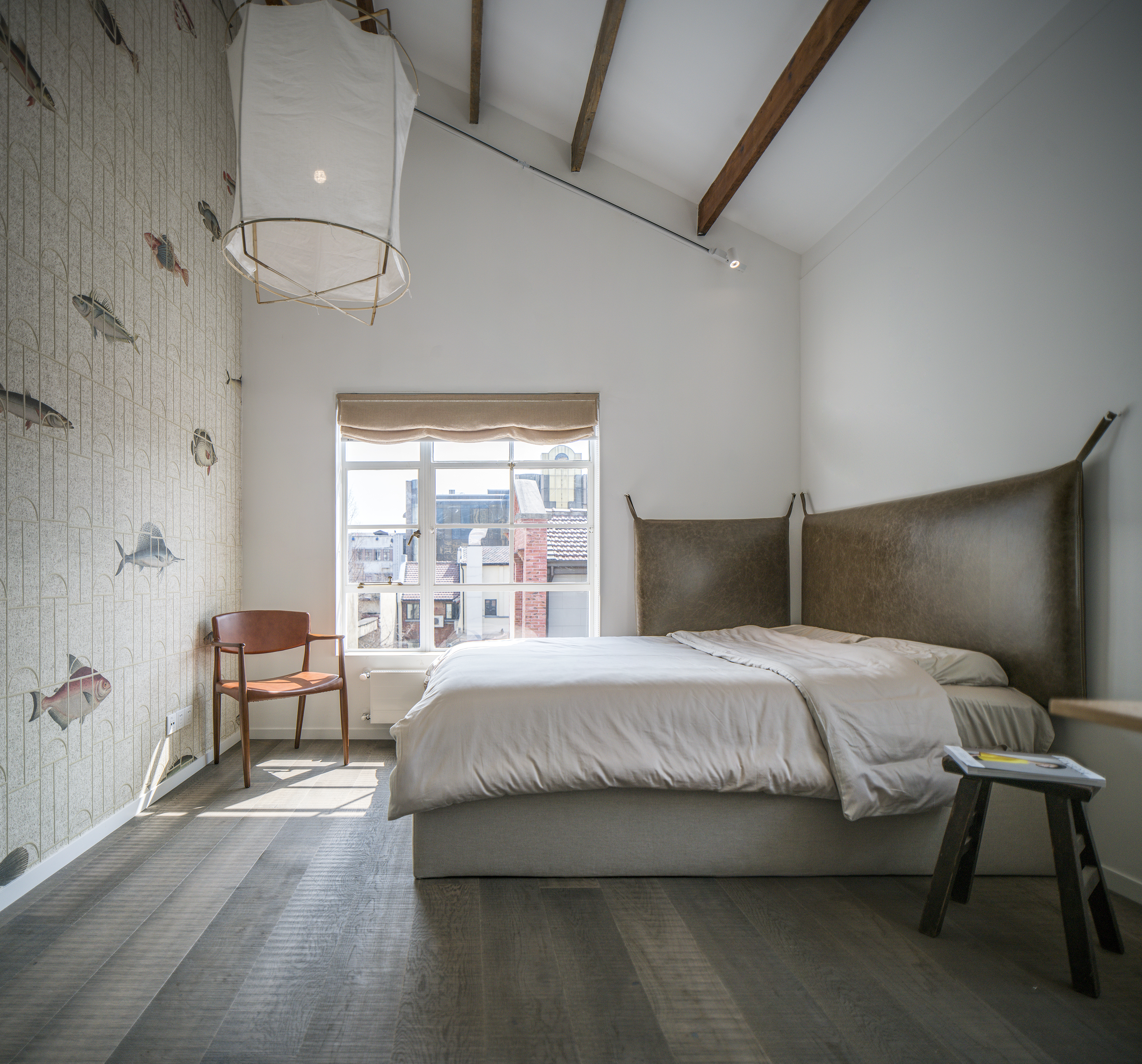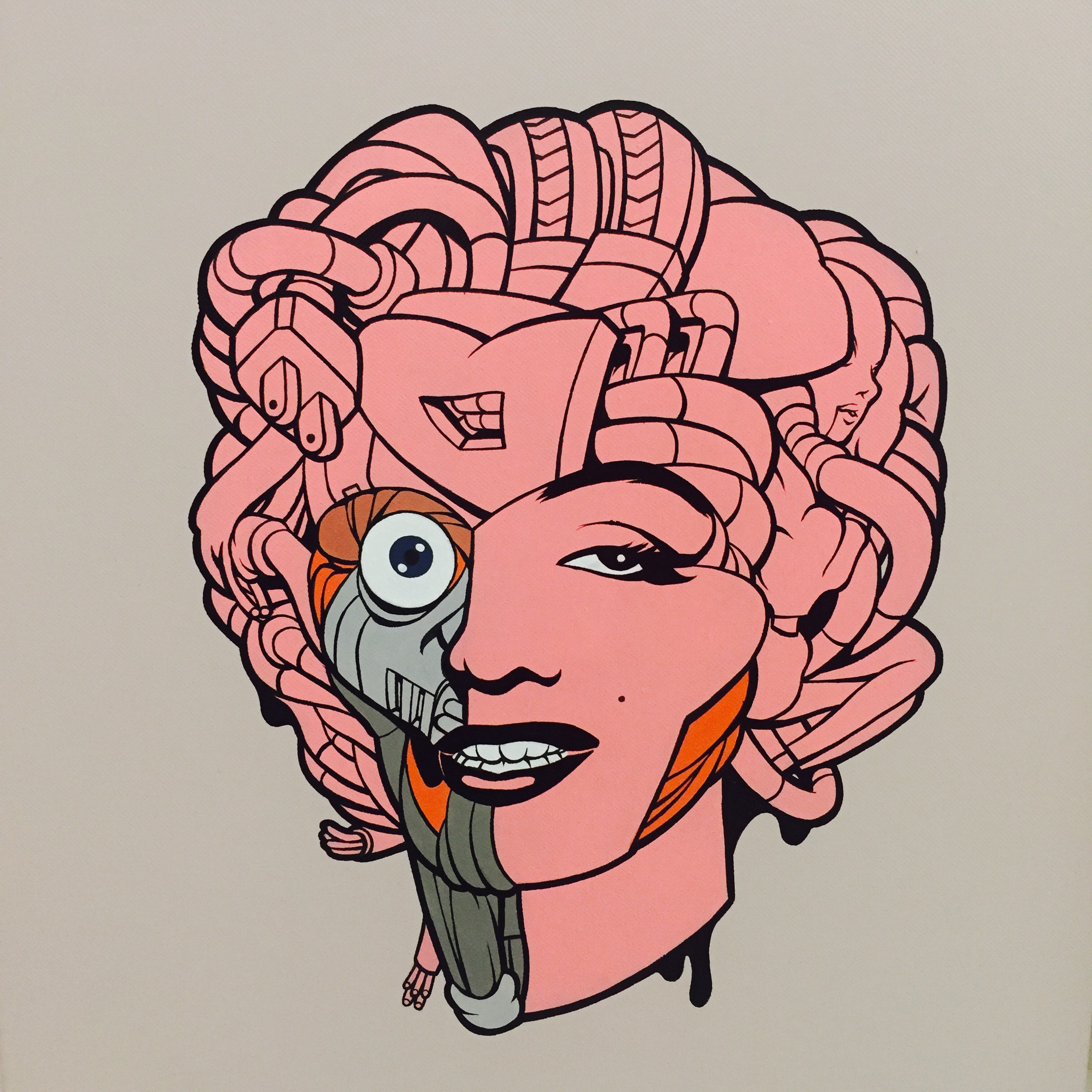Our collaborator Rebecca had the opportunity to meet Pei Pei Huang from Paper Residency in Shanghai and learn about this unique residency that is combined with a co-working space, hotel and branding agency.
China Residencies: Can you talk a bit about Paper?
Pei Pei Huang: Paper is a collaborative workspace and boutique hotel curated with the finest in decor by some of the worlds most renown design brands. We wanted to create a space to connect like-minded creatives and professionals in Shanghai and to foster exciting new collaborations and projects. We wish to attract passionate creatives and artists from all over the world to live here and be inspired to create their best work. Whether you are looking for a personal desk, a private office, a special meeting room, a place to rest when working long hours or a place to host your next event, our space is adaptive and multi-faceted. We also have a specialized “Artist in Residency” project, with a focus on art cooperation. For the artist in residency, we arrange a preview of their work to the public before they arrive at Paper. We like to ask the artist what their goals are in the Chinese art market, or in which direction they see themselves developing to best curate their work and engage their target audience.

Paper's co-working space
CR: Is there a separate gallery space or does common space serve as gallery space?
PH: The common space serves as the main gallery to exhibit artwork as we want to spotlight our artists in the most visible space in the building. There is also a small foyer on the fifth floor which will display works for our hotel guests. With the current artist, we hosted a small exhibition this month but are planning a much larger exhibition in 2018. Our aim often is to serve as a pop-up preview for our artists who have larger exhibitions coming to Shanghai either hosted at Paper or with other galleries.

Common space gallery
CR: Do you have connections with collectors or do you typically prefer to collaborate with galleries for this purpose?
PH: Yes. We work with collectors from influential galleries in Shanghai including Art Labor and Island 6. We are also in talks with partnering collectors from some of the bigger galleries, most notably The Long Museum and The Rockabund. We also have our own collectors and select artists who create their work here. On the fifth floor there is an artist, Xiang Zhujin, who does calligraphy work. We work with artists in lots of different ways; we really want to have a much stronger collaboration with them.
CR: So this space downstairs is a co-working space?
PH: Yes this is a co-working space and there is a hotel upstairs. We find this model to be more attractive to people. We are quite interested in building a global network, and the artists when they come they are interested in finding collaborators or partnerships, discussing possibilities, having meetings, displaying their artworks. It’s pretty convenient here because you can live here and there are also hot desks to work from if you are a VIP member. So in the future if you are a Paper VIP, you will be able to work and stay at any of our other locations.

View of upstairs & downstairs
CR: What kind of costs do you cover for the artists?
PH: We cover different costs and offer a variety of concessions depending on the artists needs duration of work and size of each exhibition. Concessions may include stay, travel, publicity etc..
CR: Is there a participation fee?
PH: In terms of participating we ask the artists to share some of their works with us and then we see if they fit with the Paper brand. If they are suitable we will start to explore the possible directions of the project.
CR: What about the cost of the room etc.?
PH: In terms of the room, we go by the daily rate of the room and they can go through our wechat public account and book it. Currently we have one location for Paper and two locations development.


Rooms available at Paper
CR: Do you have a budget for travel and that sort of thing or you haven’t yet formalized these terms?
PH: We have not yet formalized standard rates as many of the projects vary significantly in scope. If we have a resident, it’s usually because we have a discussion in process. If we have a project, we also have a collaborator or a sponsor and we would discuss it with them on a case by case basis.
CR: So the purpose of the residency is to find an artist who can contribute to your various projects.
PH: Yes.
CR: This is a relatively new model in China. What kind of projects have you done in the past?
PH: We just launched Paper in October of 2017. Our first collaboration with an artist was with Pat Lee. We will have a big exhibition next year. After this we can think about how to work with other artists. So with Paper, our brand, when we work with other people it’s a kind of co-branding.
CR: What is the procedure for artists interested in applying?
PH: They can send their portfolio or profile to our official email account, which we always check.
CR: There is no exact deadline. It’s more of a rolling application? Is there a fixed time for the residency, i.e. one month, three months? Or does it depend on the project?
PH: We actually review all details case by case. We do lots of events and projects. Currently we have someone at Paper, Branding Shanghai. Branding Shanghai doesn’t really have their own resources in terms of artists, so we did a collaborations with them and Pat. We don’t have any requirements, bi-monthly or quarterly, it depends. So with Pat for instance in this case it’s rather long term, probably no less than two years.
CR: So you are sort of a cross between a residency and an agency.
PH: Yes.
CR: What type of artists are you looking for?
PH: Well when we collaborate with shopping malls we often approach performance artists, animation artists or installation artists. Just like you mentioned, think of us as an agency, there are lots of angles which we work on. We look for contemporary artists who we feel would make an impact in Shanghai and have plans to exhibit here. We pick artists who’s works we feel will resonate with our community, throughout Asia and abroad.
CR: Can you tell us a little bit about your personal background?
PH: I come from the field of PR and communications. The PR industry and the whole environment is changing; in this era, creative inspiration is becoming more important so we are focusing more on design, creativity and art, so we put emphasis on this liaison between art and design.
CR: Who else do you have that is involved in this process of helping the artists with their work and their projects?
PH: Actually Helen Liu is very involved in the process of branding the artists. Jeff Fan is much more involved in the operations within Paper, the details, from dealing with the various collaborators to the final realization of the event. For me I tend to work more on the strategic side before the event, to brainstorm with everyone and figure out how to execute our vision. In general though, there is a lot of teamwork.
CR: So the day-to-day things, for instance if the artist arrives at the airport, is there someone to greet them? Who is responsible for that?
PH: The artists will have their own agent that will arrange this kind of schedule.
CR: But what if they don’t have their own agent or person who can do this for them?
PH: If they are staying here then we have our own concierge.
CR: Do you introduce artist to curators or artists or other people in the Shanghai art scene or are you more focused on the project itself?
PH: Because we are an advertising company we have some contacts there. For instance, we have one tenant in the building who started off as a curator. In October there will be two fairly big events and we will bring the artists to participate in these events.
CR: Can you tell me a little bit about the project Pat is doing right now?
PH: Pat's latest project is called “INTERFERENCE” a series where he reimagines various pop icons as animated robots. He used to be an animator for manga, for companies like DC Comics.

Pat Lee's "INTERFERENCE: Marilyn Monroe"
CR: Do you have other artists at the same time?
PH: We sometimes have a theme that we focus on for a period of time and we focus on a particular artist. We might look for other artists like him who employ these kinds of “pop” colors, perhaps to collaborate with street art brands and do crossover projects.
CR: So are you making art derivatives from the work?
PH: We are making art derivatives right now. This series we have here is for sale but we will also make some merchandise from this work and we will start to promote them through the large exhibition in January which will be in a separate space outside.
